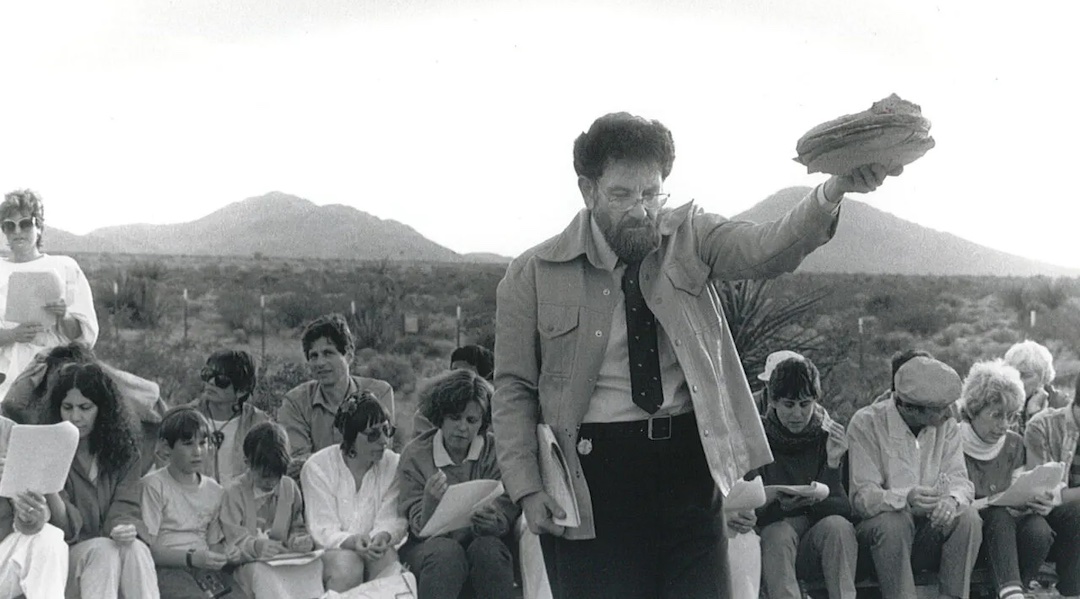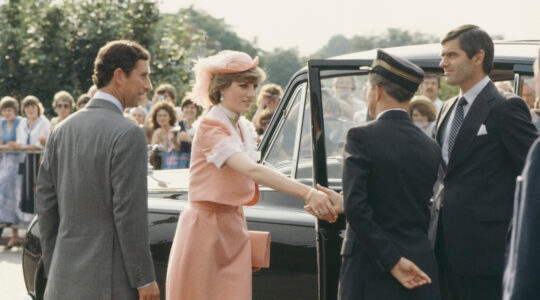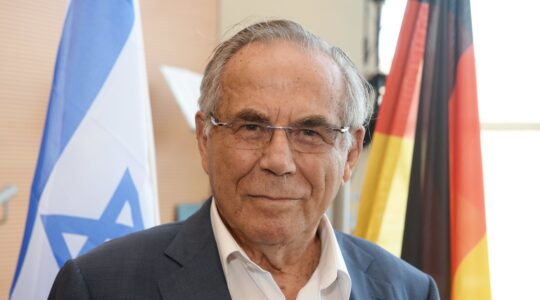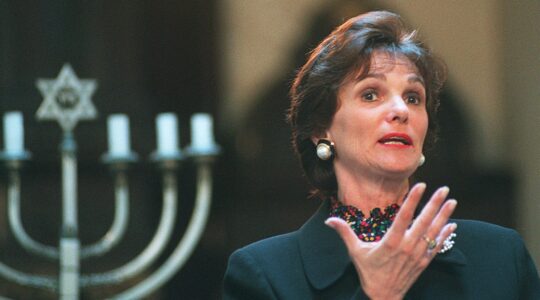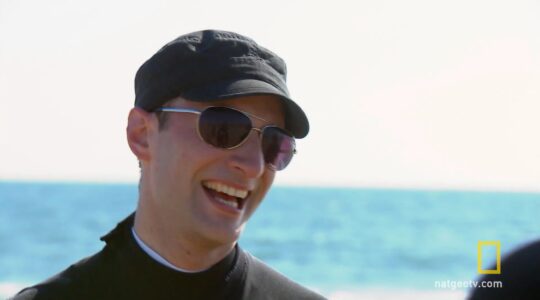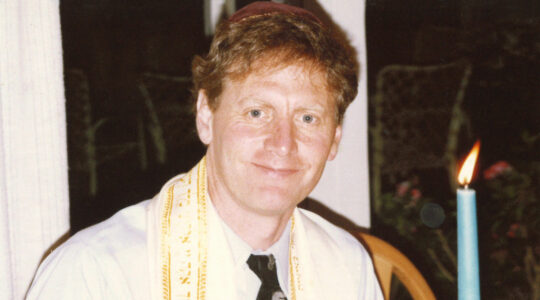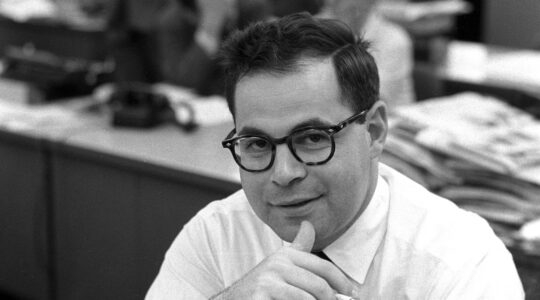A version of this story originally appeared in J. The Jewish News of Northern California.
Rabbi Burt Jacobson, a scholar, author, political activist and founder of Kehilla Community Synagogue in Piedmont, California died at home in El Sobrante on June 22 of pancreatic cancer. He was 87.
He was a cherished teacher and a pioneer in the Jewish Renewal movement, though his path took a number of turns, from a Reform synagogue in San Antonio, to the Conservative rabbinical seminary, to a deep connection and immersive study of Jewish mysticism, to a commune in Northern California and, eventually, to the founding of Kehilla in 1984 as a Renewal “synagogue without walls.”
Under Jacobson’s leadership, Kehilla Community Synagogue became, in 1985, the first Jewish congregation in the country to house a Central American refugee and, in 1988, to adopt and support a Salvadoran community.
“A Jew should imagine him or herself in Europe in 1942. If a Christian family would only take you in, then perhaps your life could be saved. That’s the situation that these refugees are in,” he said at the time.
Jacobson’s commitment to social activism made him a frequent subject of local coverage, especially in the 1980s. He was arrested in 1984 at Lawrence Livermore National Laboratory for protesting nuclear weapons. In 1987, he co-led a pre-Passover seder at a U.S. nuclear test site in Nevada and was arrested then too. With his then-wife, Jonika Mountainfire, he founded Shomrei Shalom: The Jewish Anti-Nuclear Coalition of the Bay.
In another first for a Jewish American congregation, Kehilla in 1988 endorsed Palestinian statehood and urged Israel to enter into direct negotiations with the Palestine Liberation Organization during the first intifada.
“I started Kehilla, in part, because at the time no synagogue that I knew of would have hired a rabbi with the views I held on the Israeli-Palestinian conflict,” he wrote in a 2017 essay.
Jacobson was also a pioneer in extending leadership roles to women. He introduced feminine terms for the Divine before it was a norm.
His interest in creating liturgy in more inclusive language led to his co-authoring with Rabbi Leila Berner of “Or Chadash: New Paths for Shabbat Morning,” the first original liturgy written expressly for the Jewish Renewal movement. He was also instrumental in designing the curriculum for the rabbinic training program of Aleph: Alliance for Jewish Renewal.
Jacobson was born in Cleveland on Nov. 13, 1936, the grandson of Polish immigrants. He inherited his activist spirit from his mother, who volunteered with the Anti-Defamation League and tried to alert American Jews to what was happening to their fellow Jews in Europe when few wanted to listen.
The family moved to San Antonio when he was still a boy, and Jacobson, suddenly surrounded by Christian culture, began showing an interest in religion. When he bought a small tree for Christmas and went to decorate it in his room, his parents immediately enrolled him in Hebrew school. On his own he got involved in Temple Beth-El, a Reform synagogue, and by high school had become more observant. His parents, who were secular, agreed to keep a kosher home and started observing Shabbat. It was Jacobson’s father who suggested his son consider the rabbinate.
After graduating from the University of Texas at Austin, Jacobson enrolled in the Conservative movement’s Jewish Theological Seminary in New York. There he was heavily influenced by Rabbi Abraham Joshua Heschel, who marched with the Rev. Martin Luther King Jr. in Selma, Alabama, and protested U.S. involvement in Vietnam.
During Jacobson’s years at seminary, he first met Rabbi Zalman Schachter-Shalomi, the founder of Jewish Renewal.
After Jacobson’s Conservative ordination in 1966, he moved to Boston where he worked with Rabbi Arthur Green on founding a new kind of inclusive seminary. But after some years there, he felt a lack of personal agency and decided it was time to make a big change.
“He didn’t put himself forward very strongly and felt taken over, in some ways, by others’ energies,” said Rabbi Diane Elliot, his wife of 16 years.
In the early ’70s, he moved West in search of a hippie commune and found Table Mountain Ranch in Mendocino County. He didn’t tell many others that he was a rabbi while he lived there. By the time he left for San Francisco, he was done with Judaism, or so he thought.
But then, like many spiritual searchers of the time, he found his way to the House of Love and Prayer, a countercultural Jewish community founded by Rabbi Shlomo Carlebach. There, Jacobson met a group of people who had recently started their own Renewal community called the Aquarian Minyan, and he joined them.
It proved to be a key juncture in his life.
By 1984, Jacobson had gotten to know quite a lot of people from officiating at lifecycle events, and he thought together there might be enough momentum to create a new kind of congregation. At the time, the Renewal movement had chavurahs, minyans and smaller communities, but not full-fledged, multi-generational synagogues.
David Cooper was among the people there from the start.
“Burt was clear that it was necessary for Kehilla to be a synagogue,” said Cooper, who later became a Renewal rabbi. “He wanted it to be generational, with children, adults and elders.”
Jacobson envisioned an inclusive community, where people who didn’t feel welcome in more traditional Jewish environments would feel at home, such as those in interfaith relationships and members of the LGBTQ community.
Jacobson always said Heschel was his greatest living teacher, while the Ba’al Shem Tov, a mystic and founder of Hasidism, was his greatest nonliving guide.
“Unconditional love was at the core of the Ba’al Shem Tov’s message, and it seemed to me that this new congregation should welcome and respect everyone equally,” Jacobson wrote in 2017 about Kehilla’s founding.
Cooper was a founding member and later replaced Jacobson as Kehilla’s community rabbi. Jacobson stayed on as its founding rabbi.
“Burt opened me up to be able to integrate my Jewishness with my political activism,” Cooper said. “Not only did he create a community that was dedicated to those values, but it’s a vision that’s now accessible way beyond Kehilla. So many other congregations have become more activist.”
Jacobson continued to study the writings of the Ba’al Shem Tov and recently finished a book that combines his teachings with stories from his life. “Living in the Presence: A Personal Quest for the Ba’al Shem Tov” will be published in November by Monkfish. A second book about the Ba’al Shem Tov and his influence on contemporary Jewish leaders is also in line for publication.
“He had a quiet charisma,” said Barry Barkan, a founder of the Aquarian Minyan, which just marked its 50th anniversary.
Jacobson also received a certificate in “spiritual direction” from the Mercy Institute for Spiritual Formation in Burlingame, a Catholic institution. He served as the“spiritual companion” for many rabbinical students.
Jacobson never fully stepped away from Kehilla leadership. In 2021, he led a Yom Kippur afternoon workshop asking members to adopt a sister Palestinian village as a means of creating some kind of reparations for Palestinians. Calling the initiative Face-to-Face, Kehilla members began Zooming regularly with residents of Umm al-Khair, a Bedouin village in the West Bank, and continue to help support them financially.
In addition to Elliot, Jacobson is survived by his brother Stuart Jacobson of Tulsa, as well as in-laws, cousins, nieces and nephews.
JTA has documented Jewish history in real-time for over a century. Keep our journalism strong by joining us in supporting independent, award-winning reporting.
